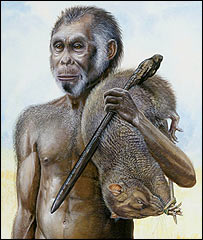Does cryptozoology deserve its bad reputation? Probably.





To almost everyone, cryptozoology does not belong in the scientific world. It relies extensively on anecdotal evidence, is known to fall headlong into hoaxes, and includes Loch Ness Monster fanatics and those people who were convinced that that poor, dead, hairless coyote was a Mexican Goat Sucker. There are thousands of online communities devoted to Bigfoot, some of which organize large expeditions into the woods which, as far as I’ve read, haven’t resulted in anything but the opportunity for these people to get together and impress each other with their expensive night-vision goggles and infrared cameras. And it’s not as if there aren’t new species to be discovered; there are tons of them – mostly insects, plants, and microscopic organisims – but cryptozoology focuses on only the pop-macrofaunal end of the spectrum, leaving the ants and mosses to others, well, more qualified.
That said, the persistence of cryptozoology (and the deep pockets of its wealthier members) has paid off more than once. The okapi, a short-necked, forest-dwelling relative of the giraffe, was regarded by Europeans as an African myth until the British governor of Uganda caught a glimpse of it in 1901.
When the platypus was discovered by Europeans in 1798, the specimens sent back to England were quickly declared fabrications; it took years of ardent persuasion for those in Australia (and fans in Europe) to convice the rest of the world that this strange little egg-laying mammal was indeed real.
The coelacanth, a massive relative of lungfish and tetrapods, was believed to have been extinct since the end of the Cretaceous until one was caught off the coast of South Africa in 1938. Since then it’s come to light that many native communities that line the eastern coast of Africa have for generations used the coelacanth for everything from a source of food to kind of sandpaper.
And then there’s Homo floresiensis, a dwarf form of Homo erectus, the discovery of whose bones on the Indonesian island of Flores in 2003 may have been foreshadowed by references to miniature people in the legends of the island’s natives.
Okapis, platypuses, coelacanths, and floresiensi all had their proponents well before their existence was proven to the world. Of course, so does the Abominable Snowman. Perhaps the lesson here is that real scientists should think about looking for the grain of truth in anecdotal evidence before disounting it altogether, and cryptozoologists should maybe, just maybe, rid themselves of crackpots stop blowing up that grain past any conceivable context.
